What Is A Spending Threshold And What Is Yours?
If you’re an endurance athlete you might be familiar with lactate threshold. It’s defined as:
the level at which the intensity of exercise causes lactate to accumulate in the blood at a faster rate than it can be removed, making it the border between low and high intensity work
To put it another way, lactate threshold is the point at which if you go any harder it’s unsustainable, but if you go easier you’re under performing and not reaching your potential.
Negotiating the back and forth of that line is the key to performing well at endurance sports. And of course this applies in other parts of life.
Stress
 As pain ripped through my quads after climbing a steep hill on a bike ride one day, I thought about how lactate threshold relates to life in general. I climbed the hill at a pace that I could not sustain for much longer. I was over my lactate threshold and my muscles burned intensely.
As pain ripped through my quads after climbing a steep hill on a bike ride one day, I thought about how lactate threshold relates to life in general. I climbed the hill at a pace that I could not sustain for much longer. I was over my lactate threshold and my muscles burned intensely.
But the thing that let me do it with confidence is that I know the hill, and can visually see the top of it just ahead. While I’m putting out an effort that’s utterly unsustainable for much longer, I don’t need to do it for much longer to finish the hill.
As long as I time the physical effort correctly with the length of time needed to perform it, I finish without collapsing or bonking.
So let’s apply this to job stress. Our jobs create numerous stress points. Deadlines, endless emails and meetings, difficult relations with coworkers, and dangerous commutes are all parts of work life. In total, most jobs leave us in a constant haze of stress that waxes and wanes, but that often gets to levels that are unsustainable.
When job stress gets to an unsustainable level, things start to unravel. It affects all aspects of life. Not only does your work performance decline, your health declines, your personal relationships get strained, and your body starts releasing too much of the stress hormone cortisol.
Too much cortisol in the blood over time creates inflammation and leads to chronic conditions such as arthritis, fibromyalgia, lupus, colitis, and a long list of other autoimmune diseases. In short too much stress over time will shorten your life.
And it’ll make the shorter life you do live miserable.
Stress Threshold
When you have too much stress in your work life or life in general, it’s unsustainable. But too little stress might mean that you could take on a bit more and perhaps move faster up the corporate ladder or achieve more professional goals.
Negotiating this “stress threshold” – like lactate threshold for endurance sports – is important. The ideal level of stress is sometimes called “optimal anxiety”. I’ve written about it before and I find it a deeply fascinating subject.
Preventing the excessive work stress that will shorten your life while achieving an optimal level of stress that will advance your career, pay, and satisfaction is a delicate balance that so many of us fail at.
And just as there’s a stress threshold, there’s also spending threshold.
Optimal Spending
 It’s easy to get excited about financial independence and FIRE and go at it so hard that you get consumed by it. Same for a passion project or side hustle. While 110% effort and “going all-in” may seem like the recipe for success in an endeavor, it could also be the recipe for burnout.
It’s easy to get excited about financial independence and FIRE and go at it so hard that you get consumed by it. Same for a passion project or side hustle. While 110% effort and “going all-in” may seem like the recipe for success in an endeavor, it could also be the recipe for burnout.
If you cut your spending too much and obsessively focus on savings and money at the expense of other aspects of life, you might be running at a level of effort that’s unsustainable for the long term. It’s akin to sprinting up a hill that goes on for miles. You won’t make it that way.
Success often takes restraint. You have to know when to ease the throttle on something to keep it running at a healthy pace.
Spending threshold could be considered the level at which you’re spending enough to live in contentment, but are still saving enough to make solid progress toward financial independence.
In my experience, finding your spending threshold is key to make progress towards financial independence while staying happy. And since it’s called personal finance, each person’s spending threshold level will be different.
Just as navigating the stress threshold is key for your work life, navigating your spending threshold is paramount for your financial life and future.
Spending Threshold
Fortunately for me I found my spending threshold early and never strayed too far from it for most of my career. It allowed me to achieve financial independence and semi-retire in my mid 40’s.
And four years of semi-retirement has virtually eliminated the most toxic and egregious forms of work stress from my life. The liberation and joy of working only 20 hours a week is life changing, and something everyone should experience.
So find your spending threshold and try not to stray too far from it. If you go over it for a while that’s okay, but realize that you can’t stay in that state and achieve your financial goals.
And if you stay under it for a while that’s okay too but just be sure you’re not depriving yourself of happiness and joy in life.
Your turn – Do you feel that you’re at or near your spending threshold?




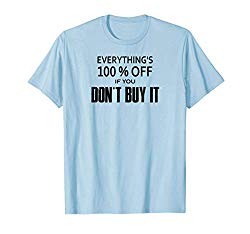
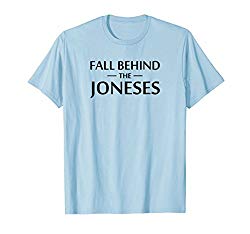
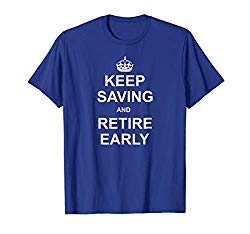






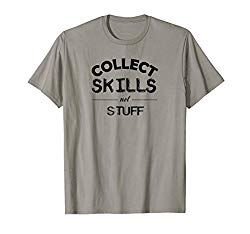

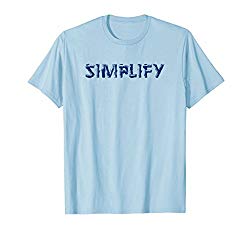
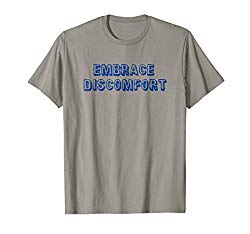


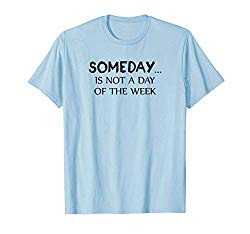
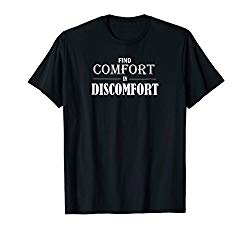



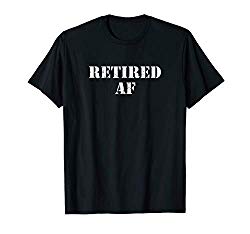
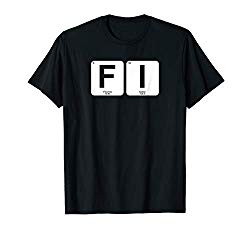



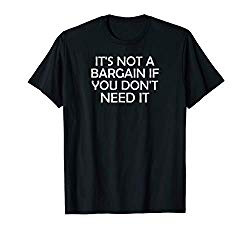













This is indeed a great concept. It all comes down to moderation. Spend too much time an either extreme and you are bound to have issues. But if you can find the fine line between the two you can have your cake and eat it too
Life is made of fine lines to find… some harder than others
when i was young and very fit i came across a line where my heart and lungs were no longer the limiting factor in being able to run faster. the lactose in my legs was the factor as you mentioned regarding cycling. i wasn’t in that zone for very long in life but it was cool to find that threshold.
i think we have our optimal spending pretty well nailed down and i’m guessing it hasn’t changed much since around 2010 (except for some rising prices). we never let ourselves feel deprived on the yellow brick road to financial independence and we were on moderate incomes. we just don’t care about too many expensive things except for premium wine and that fridge that came with an ice maker. if i had to guess we’ll spend less than we make from my income this year.
you and the mrs have the code figured out. It’s a beautiful thing ain’t it?
Great metaphor – who’d have thought climbing a hill on a bike could be used to make an excellent point on how to achieve a sustainable journey to FIRE? Well done, Dave. Important message. Enjoy the journey as you live it….
I am and I know you are too. Life is good man, happy 2022 Fritz!
All things in moderation grasshopper. -Kung Fu 😉
Thanks master!
Wholeheartedly agree.
For me, it’s about bottom-up spending. Start from zero, and spend on only the things that add value. Otherwise it’s easy to let various subscriptions and other expenses slip through the cracks.
I just need to save enough to afford my constant sushi cravings… That’s my version of financial independence. One day I’ll get there!
A new term – Sushi-FI! Everyone’s gotta have a thing, sushi ain’t a bad one to have
A little off topic (but related) — I’m so glad that there is discussion in the FI community about trying out interests/passions/goals *before* reaching FI and retirement. I’ve tried to focus a lot more on intentional spending related to my side interests while pursuing FI, as I do think that reaching the number and then feeling a bit lost is more than possible for me. As for my spending, I tend to do great for 10 months and then just go a little crazy in months 11 and 12 (recovering from that now 🙂 ).
Yes, great comment. You have to retire or FI to something. Just trying to escape a job without knowing where you’re going is not a recipe for happiness. That’s the people who claim they feel empty and bored.
Great post! I’ve gone very hard in the first couple of years of my FI journey, but this year will be setting a cap on my savings to ensure I also allocate funds for fun and passion projects.
Nothing wrong with starting out fast but as you see you have to reign in the excitement and moderate if you want to last. Good luck!
Great analogy. I think it’s a really tough balance to find. I’d bet most in the FIRE community are the type-A folks who are more prone to pushing too hard. And that the folks who don’t push hard enough are prone to lots of justifications and excuses. I recently read Grit and kind of came away realizing that I used to push way too hard physically and financially and was on the road to burnout but now I’m probably coasting too much. The author encourages people to make a “hard thing” rule for themselves and their children. It has some basic parameters but makes sure that everyone is always pushing and striving for something difficult. Well done on your part though, as it sounds like you’ve managed to strike a good balance with respect to work, physical challenges, and spending. That’s tough to do.
Have I struck a good balance? At times yes, but like anyone I’m not on a stable platform. It’s more like a ship out at sea where I might pitch from side to side sometimes. The goal is to get back to level, to equilibrium. And thanks for the book recco, I think Tim Ferriss mentioned her book a few times and I just put it on my list
I like this concept quite a bit. You’re definitely on a tear with the sports to FI analogies this year, btw! Like you, I found my spending threshold early on and never really strayed too far which was the reason I was able become FI and stop working. A key point you make here is understanding it’s okay to go over or under on occasion as that’s just how life works. One year you buy a house of car and many years you don’t. As you allude, the key is long term consistency.
Consistency is the key, you nailed it. I go over or under quite a bit but always come back to parity. Thanks dude!
I ran a lot of endurance races, mostly full marathons. I found it nearly impossible to know where the threshold was until you either hit the dragon or the wall or whatever you want to call physical collapse at around mile 19, or you finished with too much left in your tank. I only did it right two or three times when I basically collapsed crossing the finish line. Scared the medical team pretty badly one time. They had a runner a few minutes ahead of me raise his arms as he finished and then fall dead across the finish line, literally really dead. They had sent him off in an ambulance a couple of minutes before I finished and apparently I looked like death too, because a swarm of them ran up and grabbed me. It was unsettling to see the concern in their eyes. I finally managed to gasp out I was fine, this was normal for me. Don’t miss that at all! Spending, that’s much better, we’ve always spent everything we wanted and still had plenty to invest. Sometimes we spent only 25% or our income but still did not restrict ourselves in any way. If only running was as painless as spending.
Funny story of my first marathon.. I was so trying to impress the huge crowd at the finish I basically sprinted the last 100 meters or so. And the shock of that after 26 miles of a much slower pace launched my quads and hammies into violent cramps and contractions. I was on the ground in agonizing pain and had to have one of the masseuses working the race rescue me. But I finished strong, haha. And yes, if running was as painless as spending everyone in America would be fit and thin and our healthcare costs would drop off a cliff. We can only dream
That reminds me of a marathon when a lady was cheering runners on at a corner near the finish line. She said “you can see the finish, you’ve got this made!” to me as I passed her and sure enough as I turned the corner I could see balloons and streamers at the end of the street so I did like you and launched into a dead sprint. But when I got there it wasn’t the finish it was another turn, but I thought it has to be close so I kept going wide open to what looked like the finish ahead, but it wasn’t, it was just a crowd of onlookers. Finally after two or three more turns I did get to the real finish but I was so dead and yeah, cramped up like crazy. If I could have walked I’d have found that lady and told her to never ever tell anyone they can see the finish unless they really can!
That must’ve sucked… great story Steve and happy new year!
We found our spending threshold pretty early. Our lifestyle is modest and comfortable. We could spend more, but it wouldn’t make us much happier. Well, we’ll probably spend more as we get older. The key is to keep lifestyle inflation pretty low.
Joe you and your family have it dialed in. You are where lifestyle inflation goes to die 🙂
One of my smartest decisions when I was young was to always find jobs that included housing. I did that for 20 years and still have a job that includes housing and all expenses for half the year. It’s been a big help in having steady & fairly low spending when one big variable is taken out of the equation. Though I clearly spent a little more than I probably should have for many of those years or I would be done working a corporate-ish job by now:) Live & learn- nearly to the finish line now. Another great article Dave!
That’s a great hack having housing included. Another good one is a company vehicle, since transportation costs are #2 for most US families. You can see that finish line, keep your eyes on it!
My stress threshold is 30 hours a week of work. But my happy place is 20 hours a week working on FS. Feels great at this level and doesn’t feel like work.
I always want to be saving money, so my spending threshold is about $21,000 a month for a family of four. Need to earn more investment income if I want to spend more.
20 hours a week doing something fun is a sweet spot for sure. My graphic arts business hits that mark although I work on it more than that, but it’s fun so I don’t care.